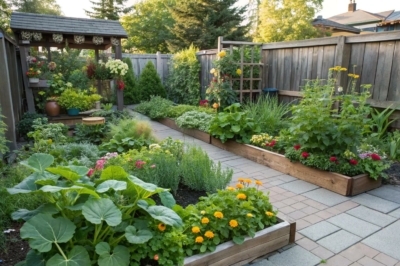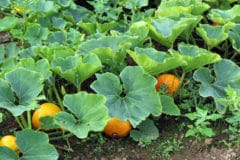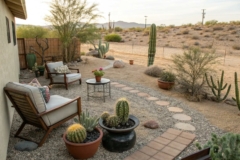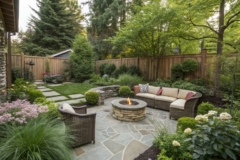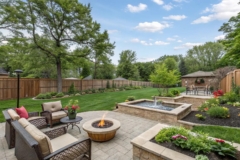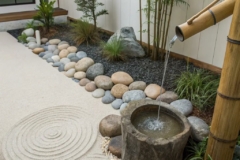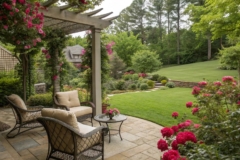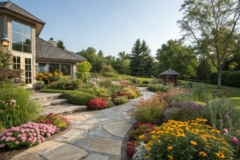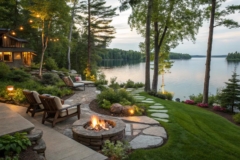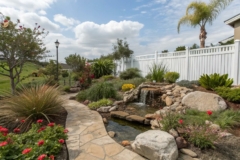1. Raised Garden Beds
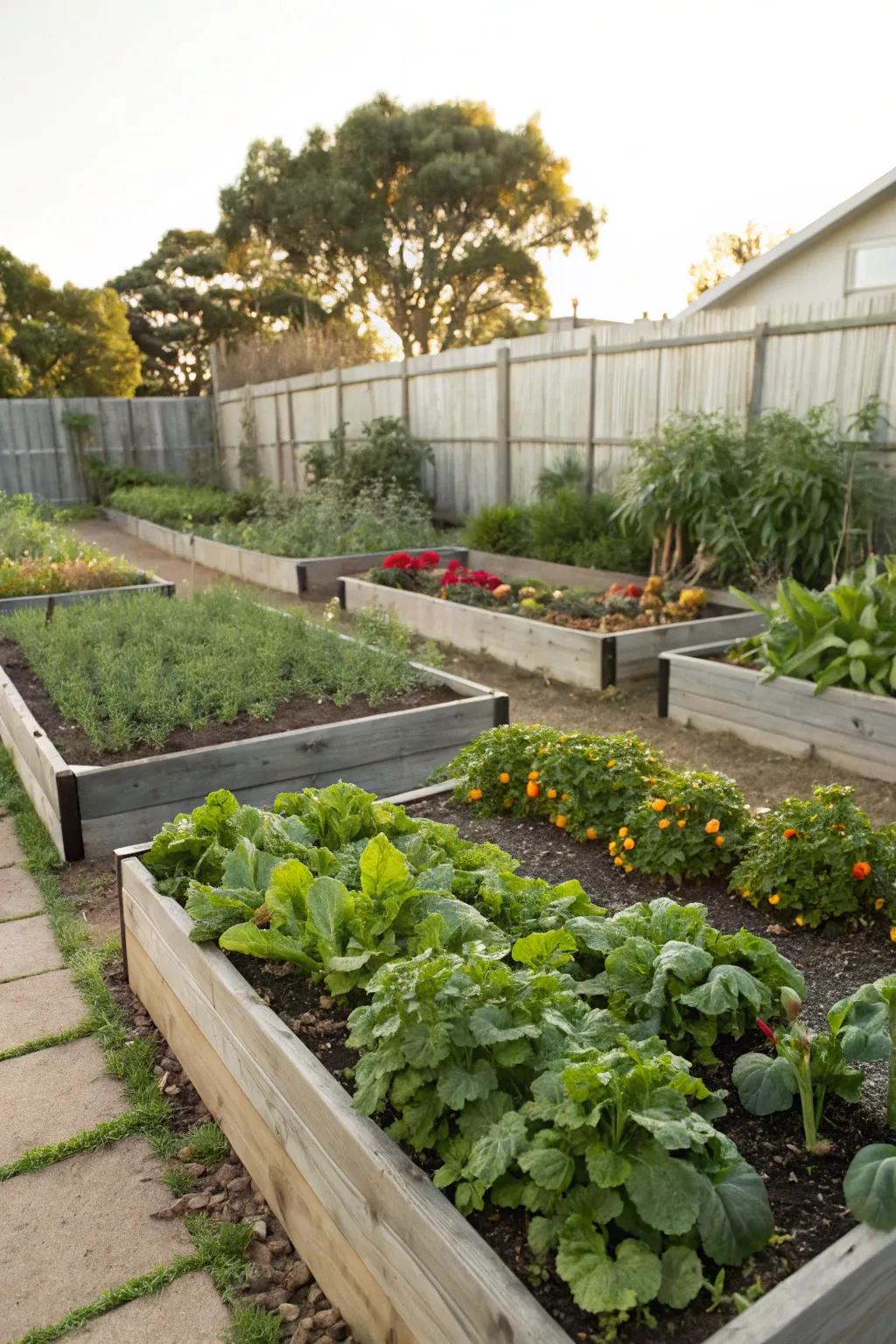
Raised garden beds are a fantastic way to organize your edible plants, and they add a touch of structure to any yard. I love how they make gardening easier on my back and provide the perfect environment for herbs and veggies to thrive.
Products that could assist:
- Wooden Raised Garden Bed Kit: Effortlessly assemble a durable bed to boost your gardening without straining your back.
- Organic Vegetable Garden Soil: Enhance plant growth with nutrient-rich organic soil for thriving herbs and vegetables.
- Gardening Knee Pads: Protect your knees while tending to your plants with these comfortable and durable knee pads.
2. Seasonal Plant Rotation
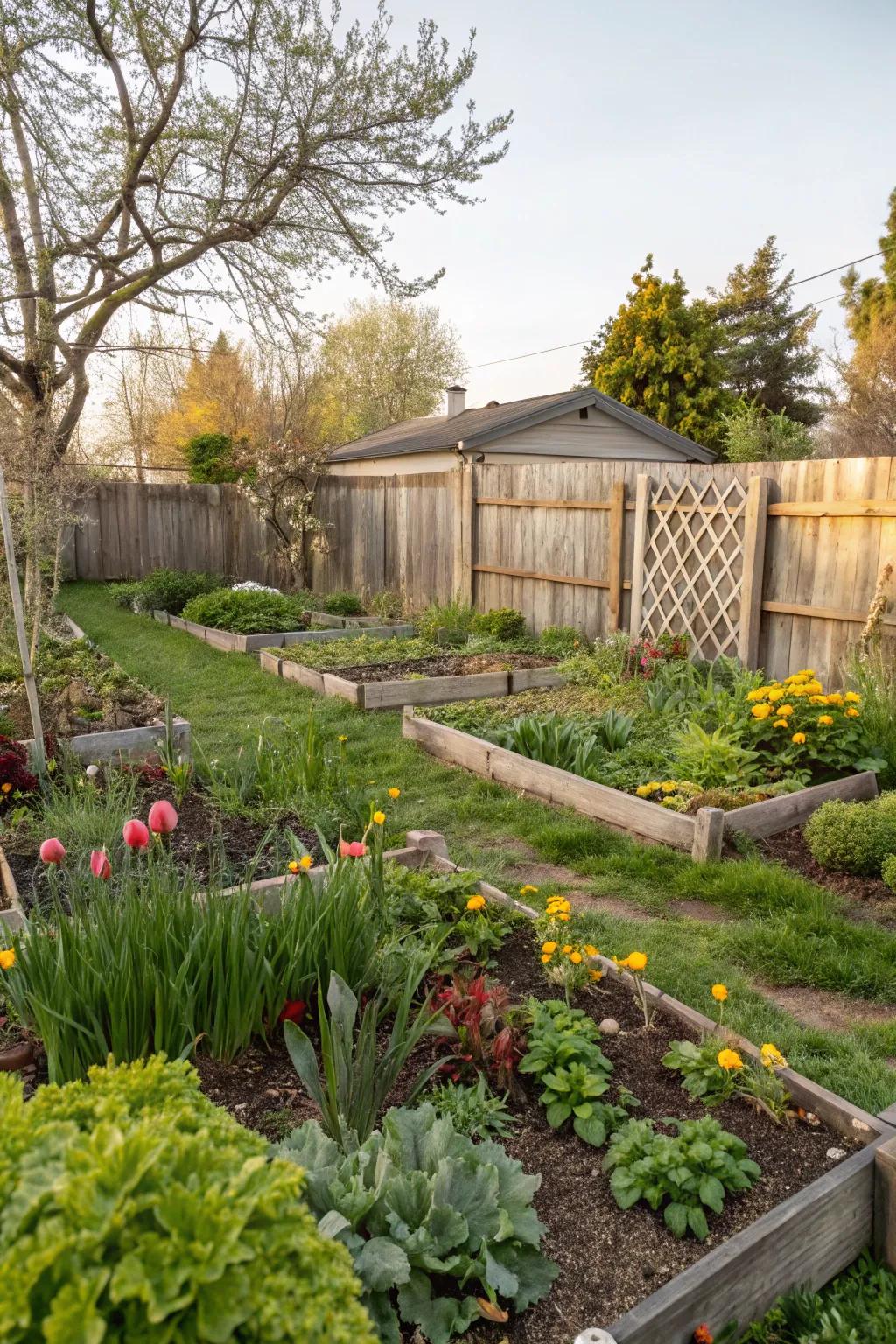
Rotating seasonal plants keeps your garden dynamic and productive year-round. I love seeing how my landscape evolves with each season’s unique colors and flavors.
A few relevant products:
- Raised Garden Bed Kit: Enhance your yard’s productivity with easy-to-install raised garden beds for seasonal plant rotation.
- Organic Vegetable Seed Pack: Start your garden right with a pack of organic seasonal seeds for year-round variety.
- Gardening Hand Tool Set: Stay equipped for every season with a reliable set of essential gardening hand tools.
3. Vertical Gardening
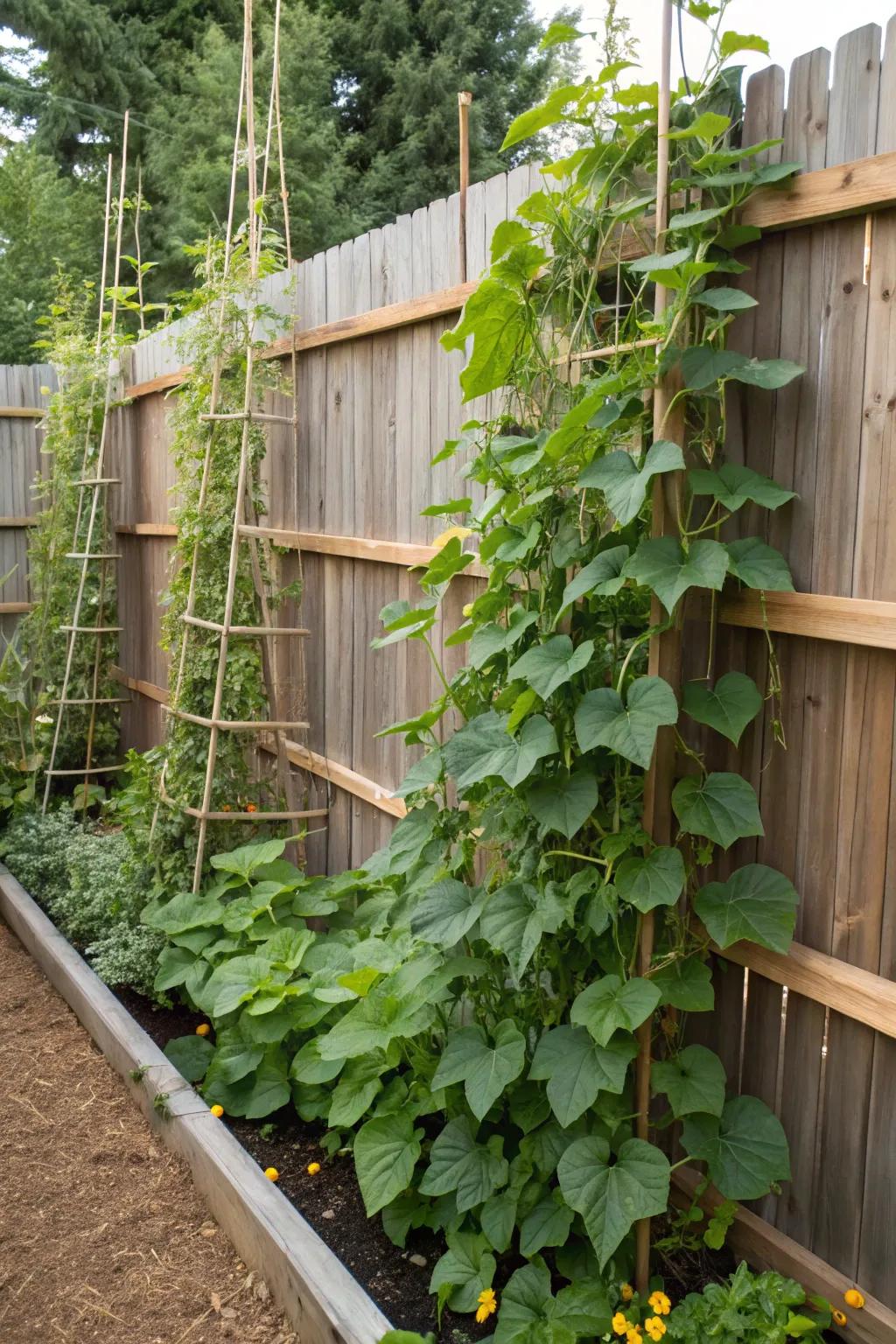
Don’t let limited space hold you back! Vertical gardening with trellises is perfect for growing climbing plants like beans and cucumbers. It’s a great way to add layers and depth to your garden.
Check if these fit your needs:
- Expandable Garden Trellis: Maximize your vertical space with an adjustable trellis, perfect for supporting climbing plants efficiently.
- Heavy-Duty Plant Ties: Secure your plants to the trellis with durable ties, ensuring stability as they grow.
- Climbing Plant Starter Kit: Kickstart your garden with a starter kit containing essential tools for healthy vertical growth.
4. Outdoor Living Spaces
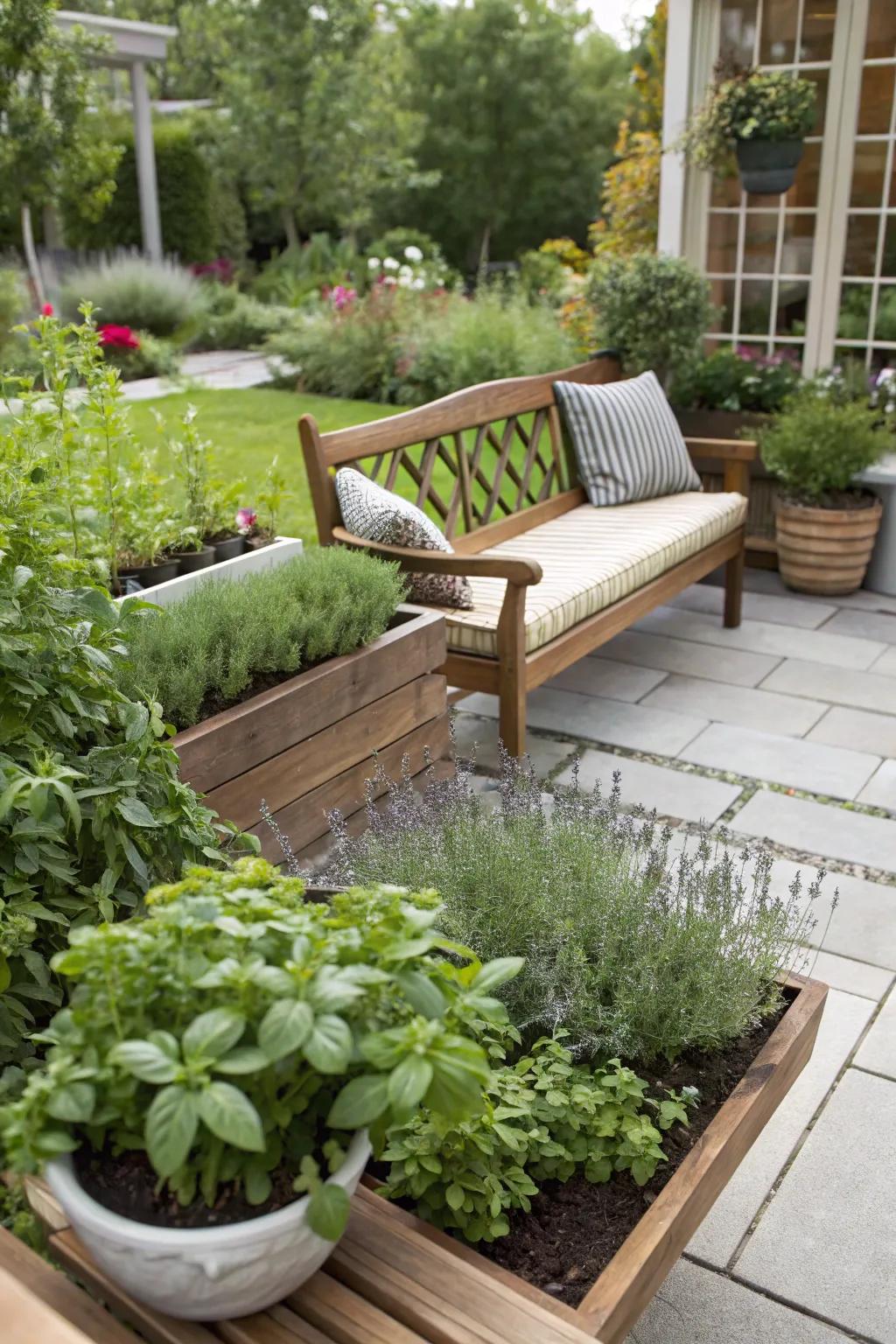
Integrating seating areas within your garden lets you enjoy the fruits of your labor quite literally. My favorite spot is a cozy bench surrounded by fragrant herbs.
These products might be useful:
- Wooden Garden Bench: Relax and enjoy your garden with a stylish wooden bench surrounded by natural beauty.
- Herb Planter Box: Enhance your garden’s charm with a versatile herb planter box for fresh, fragrant herbs.
- Outdoor Weatherproof Cushions: Add comfort and style to your garden seating with durable, weatherproof outdoor cushions.
5. Mix Flowers with Veggies
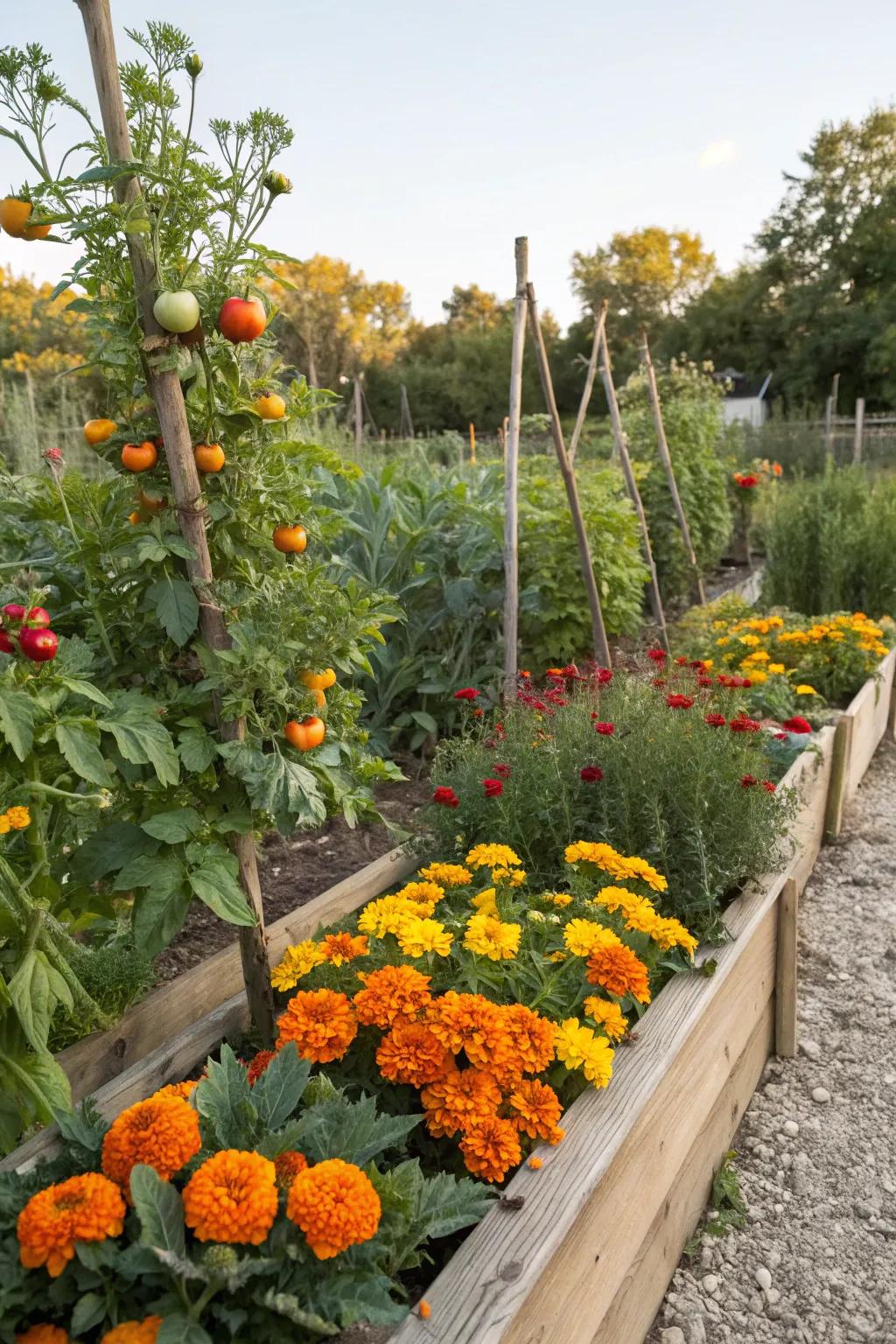
Combining flowers with vegetables isn’t just pretty—it’s practical! By mingling marigolds with tomatoes, I’ve discovered a natural way to keep pests at bay.
Useful items to consider:
- Raised Garden Bed Kit: Optimize your garden space effortlessly with a sturdy raised bed kit for vibrant flowers and veggies.
- Organic Vegetable and Flower Seeds: Start your garden right with a selection of organic seeds for healthy, colorful blooms and harvests.
- Garden Trellis Stakes: Support your climbing vegetables with durable trellis stakes, ensuring healthy growth and easy harvest.
6. Add Natural Elements

Incorporating natural elements like stones and wooden fences enhances the rustic charm of your garden. I love how these features make my space feel more grounded and serene.
A few suggestions:
- Natural Stone Pavers: Enhance your garden path with natural stone pavers for a rustic and charming look.
- Wooden Garden Fence Panels: Create a serene garden atmosphere with beautifully crafted wooden fence panels.
- Decorative Stone Edging: Define your garden spaces elegantly with decorative stone edging for a polished finish.
7. Plant Diverse Varieties
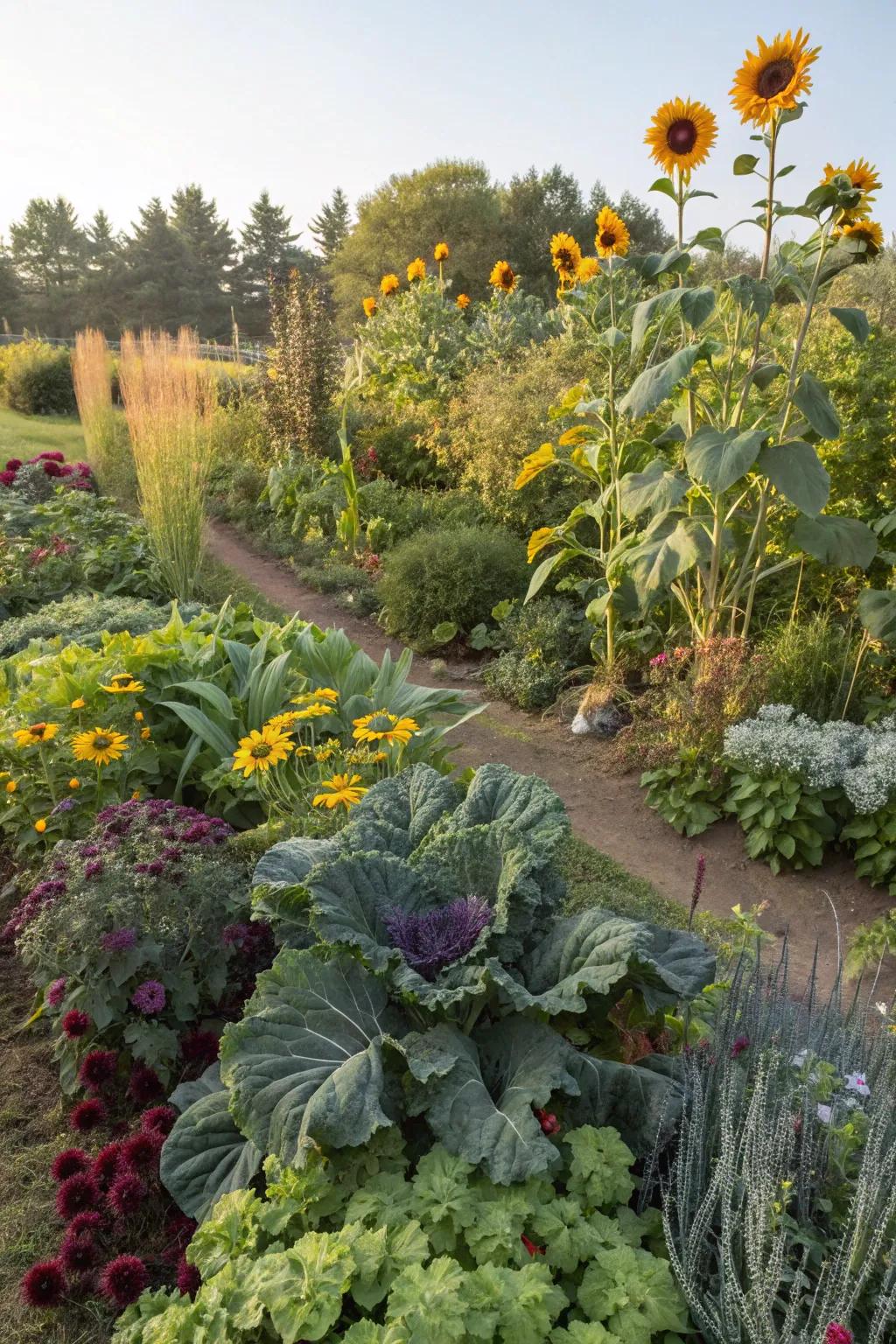
Mixing different plants like sunflowers, kale, and basil creates a vibrant tapestry of colors and textures. In my garden, this diversity not only looks amazing but also supports a healthier ecosystem.
Explore these options:
- Variety Seed Pack: Start your garden with a diverse seed pack to enrich your landscape and ecosystem.
- Gardening Tool Set: Equip yourself with essential tools for planting and maintaining a beautiful, vibrant garden.
- Organic Fertilizer: Enhance plant growth and soil health with organic fertilizer for a thriving backyard garden.
8. Fruit Trees as Focal Points
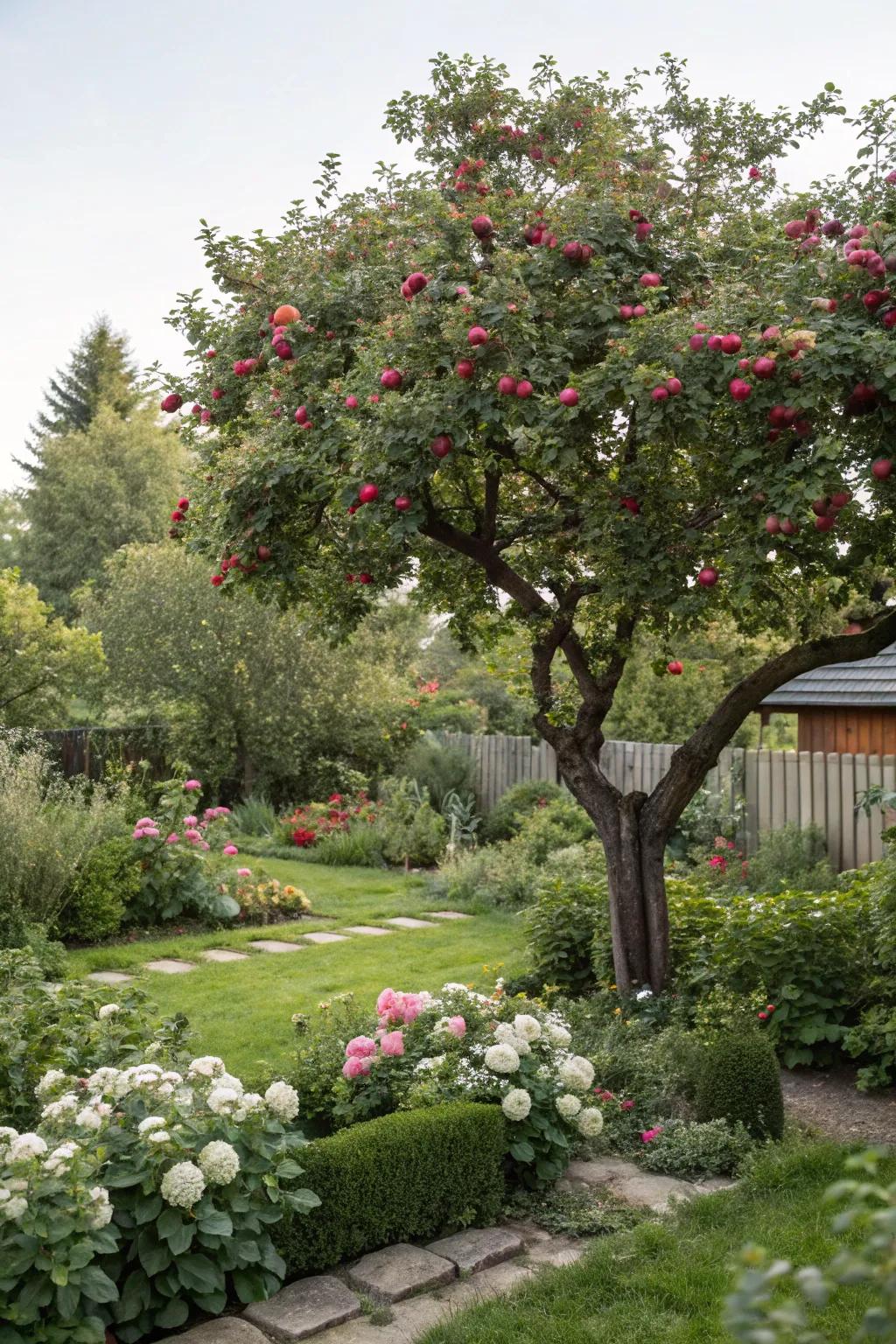
A fruit tree can be a stunning focal point in your backyard, offering shade and delicious produce. My apple tree not only looks majestic but also gives me the best pies!
Maybe worth checking out:
- Apple Tree Fertilizer Spikes: Boost your apple tree’s growth and fruit production with these easy-to-use fertilizer spikes.
- Orchard Pruning Tools: Keep your apple tree healthy and well-shaped with high-quality orchard pruning tools.
- Organic Pest Control for Fruit Trees: Protect your apple tree from pests naturally with organic pest control solutions.
9. Edible Privacy Screens
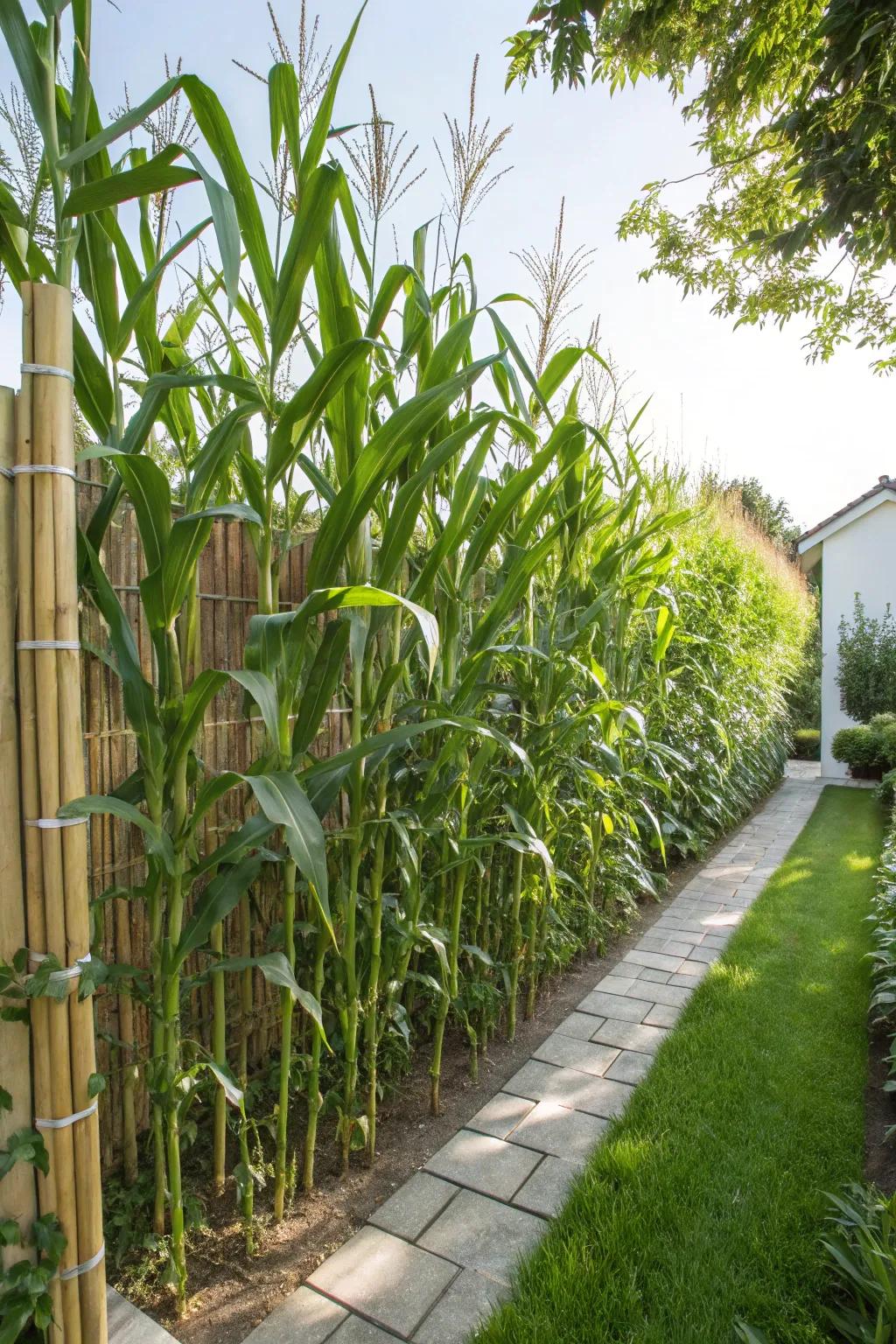
Growing tall plants like bamboo or corn can create natural privacy screens. They’re a beautiful and practical way to keep nosy neighbors at bay while adding greenery.
May just do the trick:
- Bamboo Plant Seeds: Enhance your garden’s privacy with easy-to-grow bamboo plants. Enjoy beauty and seclusion effortlessly.
- Corn Seed Packets: Create a natural privacy wall by planting fast-growing corn. Perfect for secluded and green spaces.
- Garden Trellis Kit: Support tall plants like bamboo or corn with a sturdy garden trellis. Enhance vertical growth easily.
10. Use Containers Creatively
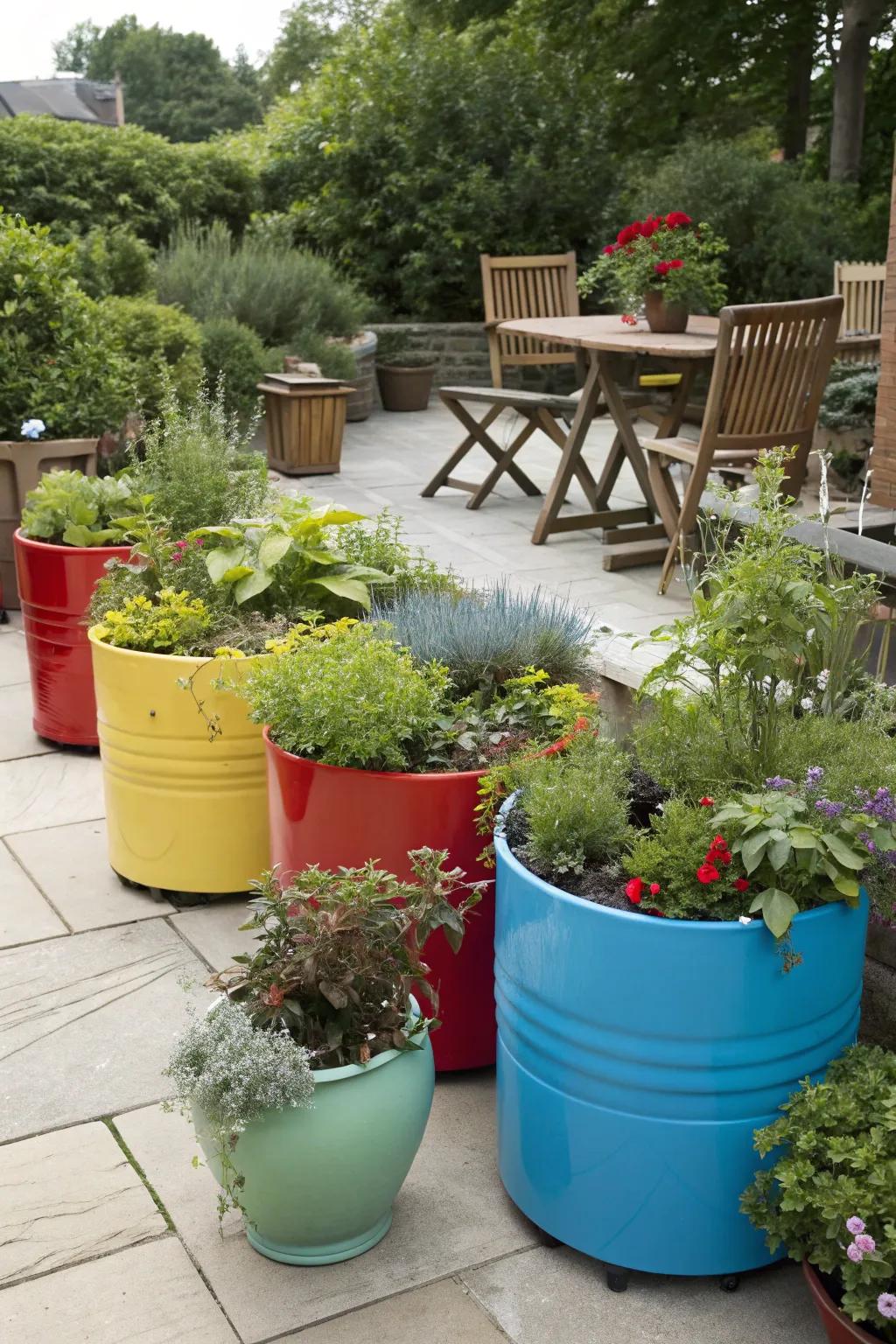
Containers are perfect for adding height, color, and flexibility to your garden design. I enjoy experimenting with vibrant pots that brighten my patio and keep my mint in check.
Items that may come in handy:
- Colorful Ceramic Plant Pots: Brighten your patio with vibrant ceramic plant pots, perfect for adding personality and function.
- Stackable Planter Tower: Maximize your space with stackable planters. Grow herbs and vegetables vertically with ease.
- Self-Watering Planters: Ensure healthy plants with self-watering planters that reduce maintenance and enhance growth.
11. Create Inviting Pathways
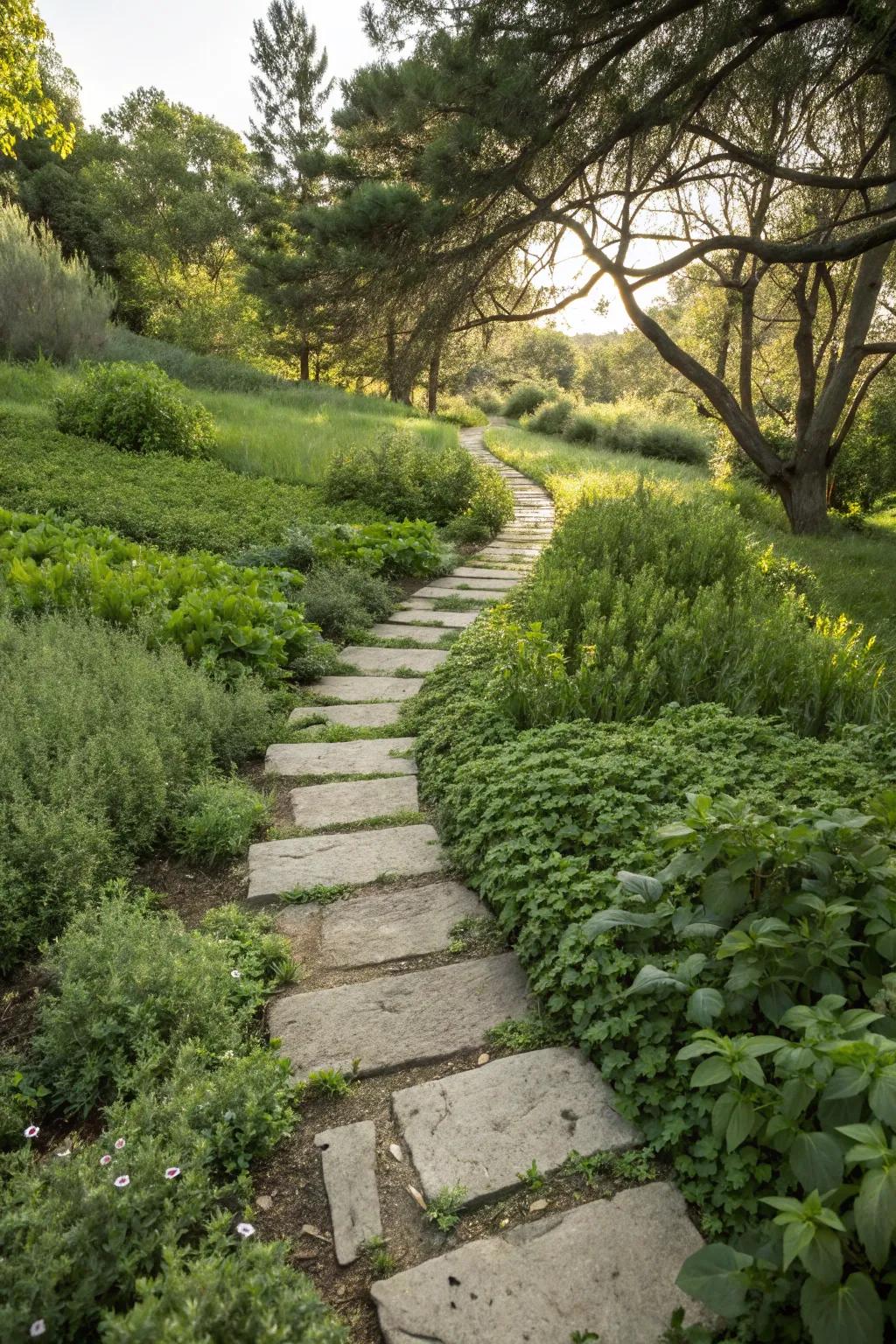
A well-designed pathway can lead you through your edible landscape like a secret garden. Adding stepping stones through my herb patch makes every stroll a sensory delight!
Try these:
- Garden Stepping Stones: Transform your garden today with stylish stepping stones for a charming and functional pathway.
- Outdoor Pathway Lighting: Illuminate your garden path beautifully with energy-efficient outdoor pathway lighting options.
- Herb Garden Starter Kit: Enhance your pathway with aromatic herbs using a convenient herb garden starter kit.
12. Edible Ground Covers
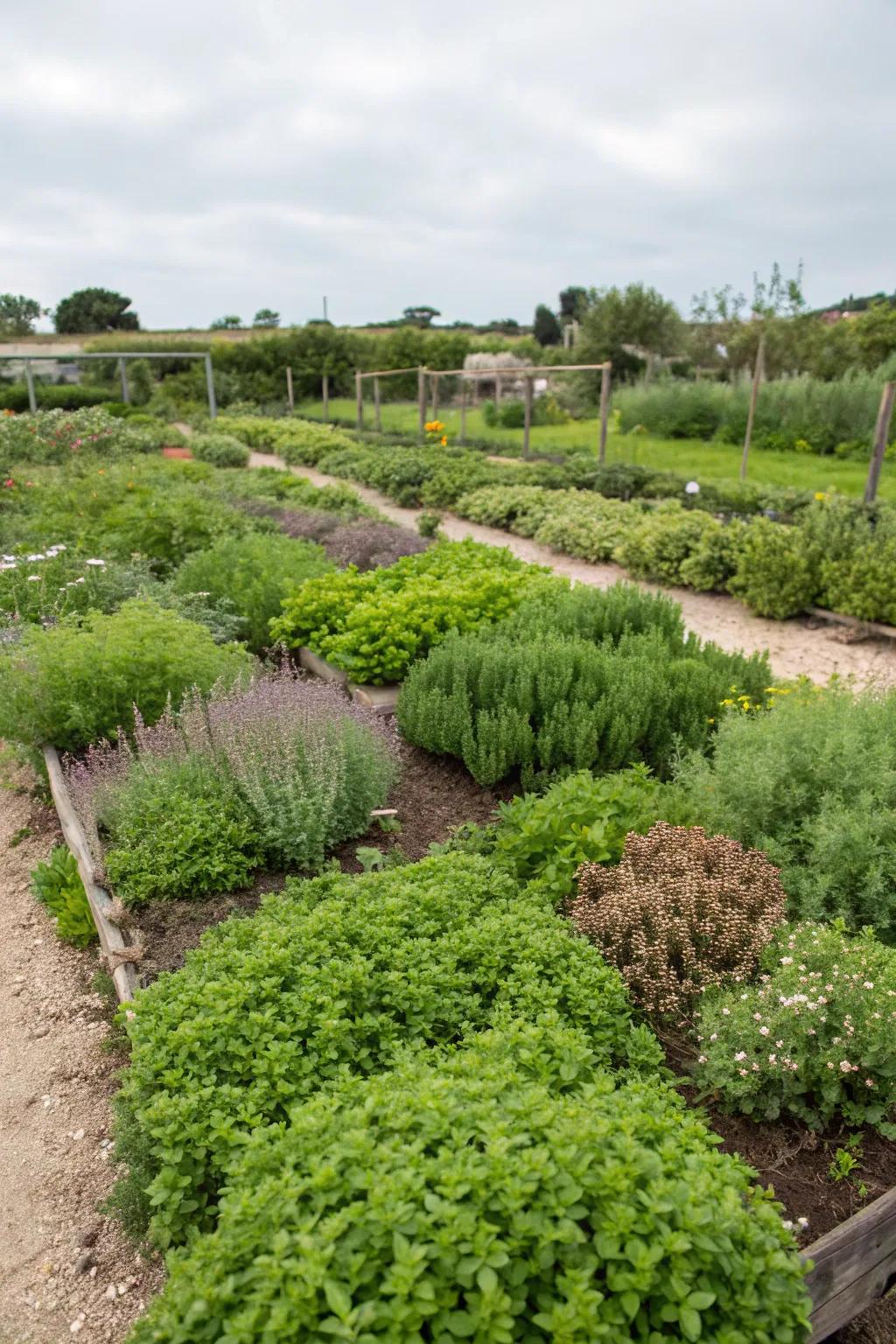
Using edible ground covers like thyme or oregano can fill in the gaps beautifully and provide fresh herbs for cooking. In my yard, they keep the soil healthy and the flavors fresh.
Might be a good match:
- Pack of Thyme Seeds: Plant thyme seeds to create flavorful ground cover and elevate your culinary creations today.
- Organic Oregano Seeds: Grow lush oregano for a beautiful landscape and fresh herbs right at your fingertips.
- Herb Garden Soil Mix: Use quality soil mix to ensure your edible ground cover thrives with vibrant health.
13. Incorporate Arbors and Trellises
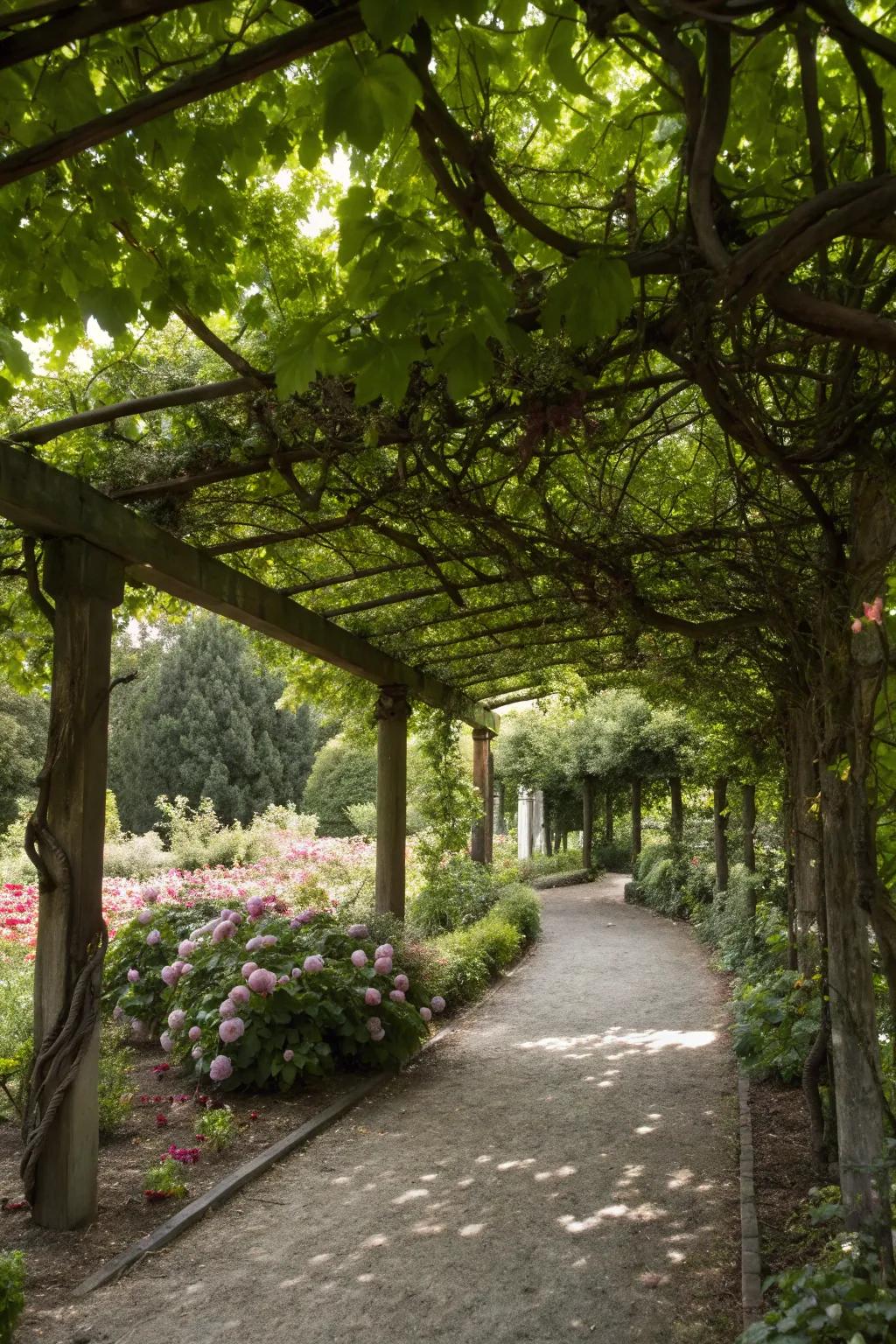
Arbors and trellises aren’t just for looks—they’re fantastic for growing grapes or passion fruit. In my backyard, they add vertical interest and a touch of romance.
Check these products out:
- Wooden Garden Arbor with Lattice: Enhance your garden’s elegance with this sturdy wood arbor perfect for climbing plants and flowers.
- Metal Trellis for Climbing Plants: Add vertical charm by supporting vines and flowers with this durable metal trellis.
- Expandable Wooden Trellis: Create a customizable support for your passion fruit with this versatile expandable trellis.
14. Surprising Edibles: Grow Grains
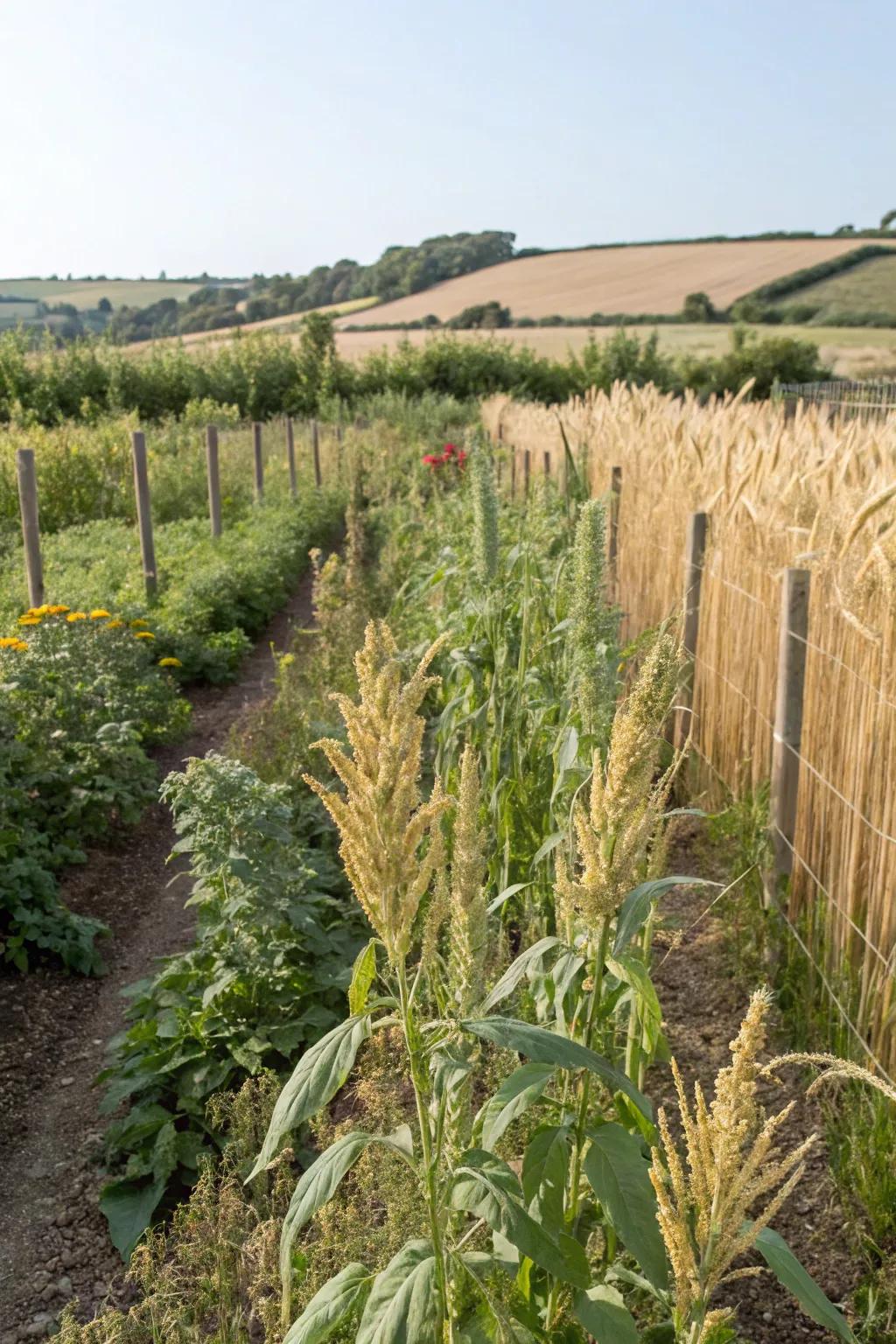
Try growing grains like quinoa or barley as a surprising addition to your garden. It’s a unique and rewarding way to diversify your harvest and impress guests with homemade grain dishes.
Give these a look:
- Quinoa Seeds for Planting: Plant quinoa seeds to start your journey into grain cultivation right in your backyard.
- Barley Seeds for Home Gardens: Grow your own barley with quality seeds, perfect for sustainable edible landscaping.
- Home Grain Milling Machine: Get a home milling machine to process your harvested grains into fresh flour easily.
15. Functional Aesthetics
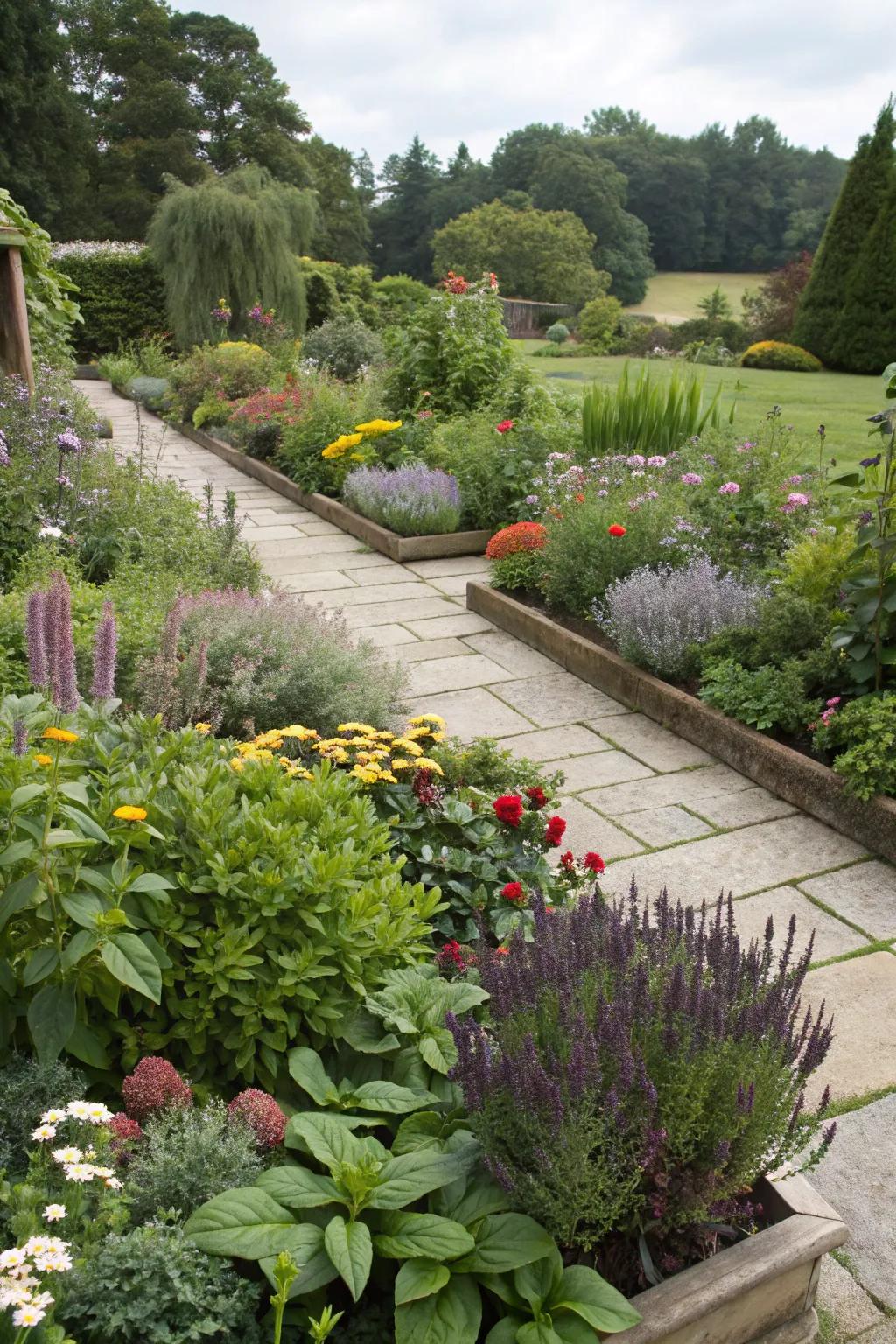
Combining beauty with practicality ensures your garden is both a feast for the eyes and the stomach. My edible landscape cleverly disguises utility with visual appeal.
A few things you might like:
- Raised Garden Bed Kit: Elevate your edible garden design with a stylish, durable raised bed for easy access.
- Fruit and Vegetable Fertilizer: Boost your garden’s productivity with premium fertilizer for lush and healthy edible plants.
- Decorative Garden Trellis: Enhance vertical growth and beauty by adding an elegant trellis to your landscape design.
16. Water Features with Aquatic Edibles
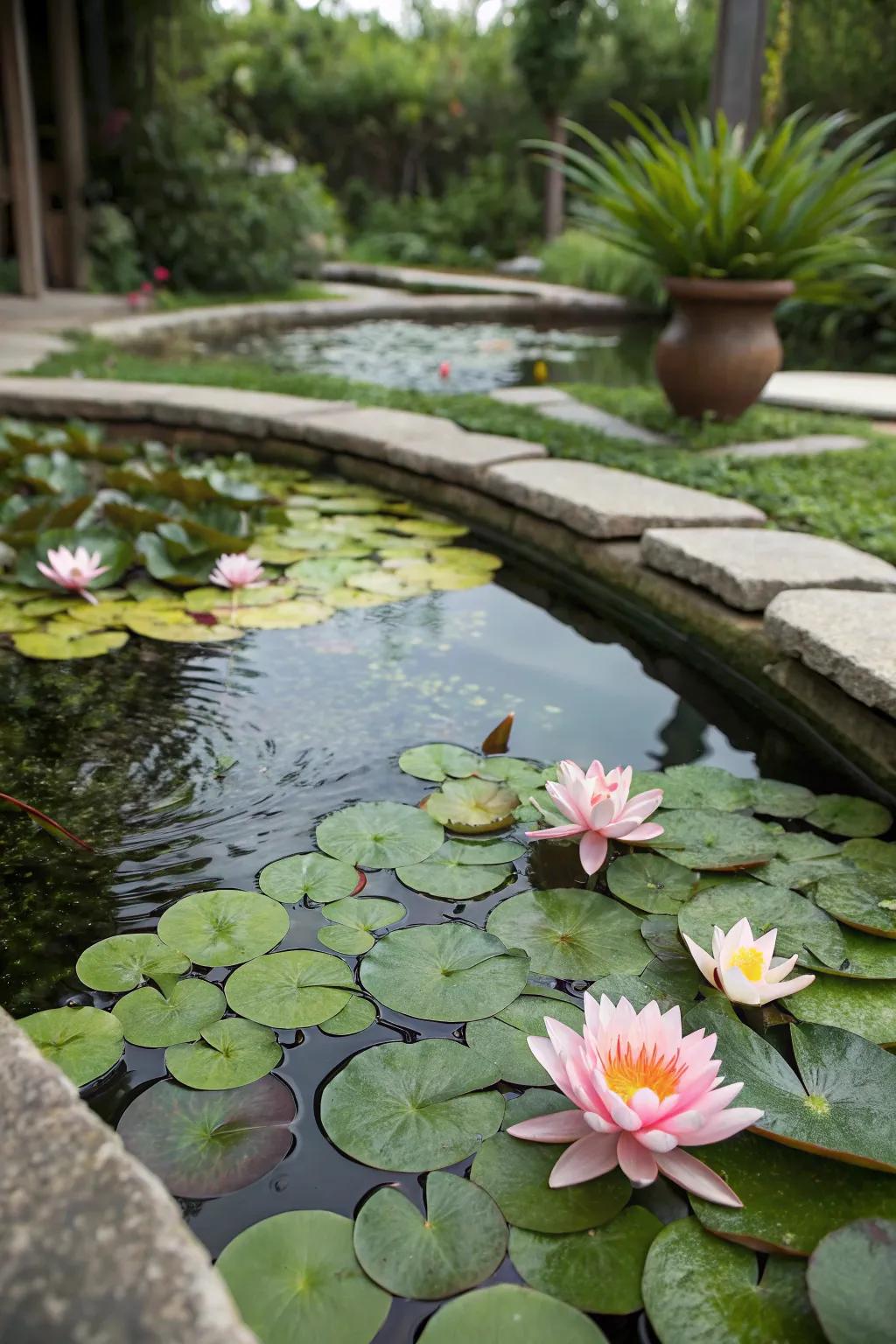
Incorporating a small pond with watercress or edible lotus adds tranquility and harvest potential. In my garden, the gentle sounds of water make it a peaceful retreat.
Some ideas to consider:
- Outdoor Garden Pond Kit: Transform your backyard with a pond kit that provides elegance and supports aquatic edibles.
- Watercress Seeds for Aquatic Gardens: Grow nutrient-rich watercress in your pond for fresh, leafy greens and enhance your garden’s beauty.
- Lotus Planting Kit: Add stunning edible lotus to your pond, creating a tranquil, vibrant environment for your garden.
